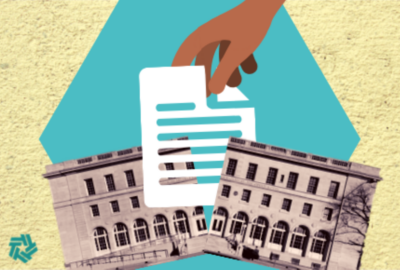Three Recovery Board lessons ready for governmentwide expansion
The Government Accountability and Transparency Board submitted its first report to President Barack Obama last week highlighting oversight and accountability...
The Recovery Board is testing a secure portal that brings together forensic and analytical tools to prevent and find waste, fraud and abuse in federal spending. It is one of several initiatives agencies should adopt in the governmentwide fight against improper payments.
The Government Accountability and Transparency (GAT) Board submitted its first report and recommendations to President Barack Obama last week and included the suggestion to take FederalAccountability.gov to a broader agency audience.
“Once logged into the FederalAccountability.gov system, government users have role-based access to varying levels of information about those seeking and receiving Recovery Act funds,” the report stated. “For example, agency procurement, grant, and loan officials have access to risk-relevant information to assist award- and payment-making determinations, whereas Office of Inspector General employees have access to law-enforcement sensitive information.”
The report said the Recovery Board is piloting FederalAccountability.gov for Recovery Act spending with Medicare and Medicaid provider enrollment data, veterans’ disability payments and small business HUBZone certifications.
The board also will apply the site’s tools to spending by the Defense and Education Departments, and the National Science Foundation.
The Recovery Board would need the authority to expand the use of this system to non-stimulus spending, the report stated.
Therefore, the GAT Board recommended the Office of Management and Budget issue guidance requiring agencies to use tools similar to those found in FederalAccountabilty.gov, and encourage them to use the site’s software entirely.
“This guidance should encourage agencies that are currently planning to construct discrete accountability data and operations systems to coordinate with the Recovery Board, and, on a case-by-case basis, agencies could build their own extensions to the centralized solution where such variance is deemed necessary by OMB,” the report stated. “However, it should be clear that deference is given to a central solution wherever practicable, in order to prevent duplicative accountability modules throughout government and to increase sharing of the tools and resultant data. Additionally, as new analytical tools are developed, they too should be placed on the shared framework of FederalAccountability.gov. Finally, as a necessary follow-on to the sharing of accountability tools and data, the federal government should identify and revise legal authorities that impinge on the utility of the collaborative analytical tools that have emerged since those legal authorities were first crafted, before the ascent of the digital age.”
Recovery Board lessons learned
President Obama created the GAT Board in June. It’s now led by Earl DeVaney, the chairman of the Recovery Board until he retires Dec. 31.
The board is taking lessons learned from the Recovery Board and determining if they can be applied to governmentwide spending.
“The GATB was charged with recommending ways to improve the tracking and display of federal spending data and broaden the use of cutting-edge forensic fraud detection technologies,” wrote OMB Director Jacob Lew in a recent blog post. “And the President directed the GATB to work in close concert with the Recovery Accountability and Transparency Board, which established a new benchmark for how we should collect, display and oversee federal spending data under the Recovery Act through Recovery.gov and its innovative Recovery Operations Center.”
The report and recommendations cover three main areas with a governmentwide accountability framework being one.
The GAT Board also said the agencies should consolidate the 14 different data collection and data-display systems currently used into one system.
“Drawing on the lessons learned from the Recovery Act, the GAT Board believes that a single automated electronic collection system that uses a limited but well-defined set of data elements will promote consistent reporting and data standardization, while reducing current recipients’ burden of reporting to multiple government systems,” the report stated. “Use of a single system for data collection means that training and helpdesk support can be consolidated into a single organization, while use of a single system for data display can increase the accessibility and availability of data for all stakeholders (agencies, Congress, taxpayers). Moreover, integrated collection and display systems will reduce or eliminate current system redundancies and achieve significant savings.”
Additionally, the board suggested OMB consider whether the Federal Financial Accountability and Transparency Act (FFATA) — the requirements related to the Recovery Act and other reporting mandates — need to be refined.
One identification standard for all spending
In the third recommendation, the GAT Board wants agencies to use a universal award-identification number for all contracts, grants and loans.
This is not a new recommendation. The Federal Acquisition Regulations Council proposed a rule to require agencies to give vendors a unique identification number for contract awards. The Treasury Department also is leading an effort to standardize how agencies submit payment requests by October 2014.
“The Recovery Board has engaged a non-profit Federally Funded Research and Development Center to conduct a feasibility study on this issue based on significant Recovery Board lessons learned and the work of the Inspectors General during Recovery Act implementation,” the report stated. “Although this feasibility study is still ongoing, the results to date have offered three solutions for implementation of a universal award ID, as well as three primary options for the format of the ID itself.”
The GAT Board said it will work with Treasury and OMB to establish an online centralized repository that limits both the impact on agency systems and the need for reengineering.
“This solution would provide agencies and recipients of funds the ability to link Treasury payments to specific awards, thus providing critical information about the expenditure of federal funds,” the report stated. “This step will necessarily include determining the governance needed to put the universal award ID into place.”
The GAT Board also reiterates OMB’s share-first policy when it comes to software to find and eliminate waste, fraud and abuse.
The GAT Board hopes to issue another report by June 1 detailing more results and research, and deadlines around accountability and transparency issues.
“With these recommendations now in hand, the President will continue to push federal agencies to take bold steps in improving tracking and oversight of federal spending,” Lew wrote.
RELATED STORIES: Transparency ‘enforcer’ in new oversight role
Recovery Board’s Devaney to resign
Treasury, HHS, Justice find more areas to cut waste
Copyright © 2024 Federal News Network. All rights reserved. This website is not intended for users located within the European Economic Area.
Jason Miller is executive editor of Federal News Network and directs news coverage on the people, policy and programs of the federal government.
Follow @jmillerWFED






